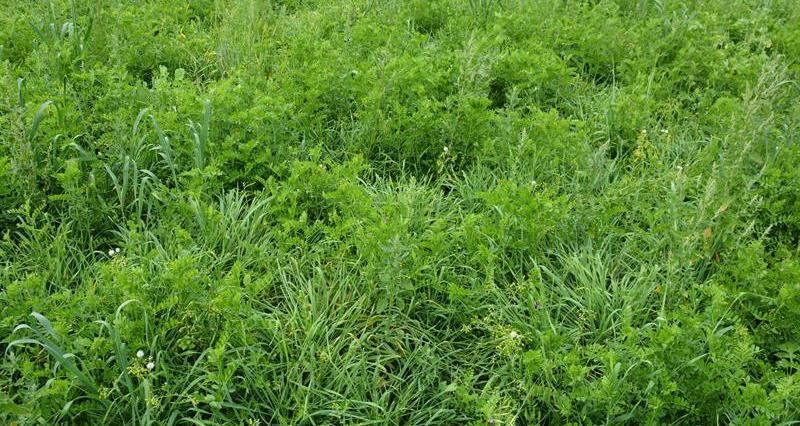What
A winter cover crop is established on land that is cultivated and left fallow through the winter to capture residual nitrogen and reduce the risk of soil erosion.
Why
If you have soils prone to nitrate leaching (generally light soils), a winter cover crop will capture residual nitrogen on cultivated land left fallow through the winter. In certain situations, they may also reduce soil erosion and prevent other pollutants reaching watercourses. It is not necessary to establish winter cover crops if the stubble forms a green cover and is going to be retained until at least mid-February.
How
If land is to be left fallow after harvest and the stubble of the previous crop cannot be retained through the winter, then a winter cover crop should be sown into a rough seed bed after cultivation but before 15 September to prevent nitrate leaching into watercourses.
- You can use phacelia, vetch, ryegrass, grazing rye, barley and mustard, or a mix of these (though avoid sowing mustard if brassicas are part of the rotation as the susceptibility to clubroot will be increased).
- You should seek advice to choose the correct seed mix to suit your conditions.
- Sow at a seed rate that will provide a dense cover and protect soil from erosion.
- Do not apply any fertilisers or manures.
- Destroy the cover crop immediately before establishment of the next crop to reduce the potential for nitrate losses. Alternatively, the stubble of the preceding crop can act as a green cover if no pre-harvest desiccant was used. Retain the stubble unsprayed and uncultivated for as long as possible (at least mid-February) to feed farmland birds through the hungry gap (January – April).
- Maize stubbles are not suitable alternatives to a green cover crop, as they are particularly prone to soil erosion and run-off. Use a variety that can be harvested early so that a winter cover crop can be established.
- Maize and other late harvested crops can be under-sown with a grass or clover-based mix to establish a green cover after the crop has been harvested.
- If over-wintered stubbles (not maize) are retained, then avoid the use of pre-harvest desiccants in the previous crop to encourage a green cover and retain the stubble unsprayed and uncultivated for as long as possible (at least mid-February) to feed farmland birds through the hungry gap (January - April).
